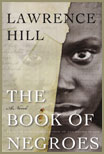
By Tracey Arial
Literary nonfiction is a work that reads like a novel, but includes only fact and presumed facts.
The “presumed facts” part gets tricky sometimes and writers have dealt with the challenge in different ways.
In some cases, writers choose to simply change facts to suit their story and release potential literary non-fiction works as novels instead. That was the choice of Lawrence Hill, who released his award-winning The Book of Negroes as a novel.
Other writers produce great books that read more slowly, such as Adam Hochschild’s epic work of literary nonfiction, Bury the Chains. In Hochschild’s work, facts are as well-documented as possible, while assumptions, guesses and imaginings, when necessary, are also clearly identified as such when they occur.
Lawrence Hill outlined the many ways he strayed from the truth to write a better story in a chapter at the end of his novel called A word about history. His decision to explain how his novel differs from reality was particularly important in Canada, since here his novel borrows the original name of a real document. As Hill describes on page 471:
In terms of the sheer number of people recorded and described, the actual Book of Negroes is the largest single document about black people in North America up until the end of the eighteenth century. It contains the names and details of 3,000 black men, women and children, who, after serving or living behind British lines during the American Revolutionary War, sailed from New York City to various British colonies. Although a few went to England, Germany and Quebec, most of the people whose names appear in the book landed in Nova Scotia and settled in the areas of Birchtown, Shelburne, Port Mouton, Annapolis Royal, Digby, Weymouth, Preston, Halifax, Sydney and other places. It should be noted that some Loyalists sailed from South Carolina, and many are likely to have escaped by other means to the British colonies away from the prying eyes of the inspectors registering names in the Book of Negroes.
Hill then goes on to describe where he found his source document, although the link he provides to collections at the Library and Archives Canada no longer functions. You can use this link instead.
These musings show that writers know when they are straying from the truth. Honest ones always try to make sure the reader knows it too.
In one spot, Adam Hochschild specifically compares his work to a novel to make the point. He begins chapter 22, on page 309, with:
If this book were a novel, it might now read: “Twenty years passed…” Not because nothing happened in these decades, but because in history, as in our own lives, there are moments of sudden transformation and times when change that has been passionately yearned for does not come. And so it was with slavery in the wake of the 1807 victory in Parliament. The long-imagined goal, the liberation of all British slaves, the great hope of abolitionists from the time that Thomas Clarkson set off on horseback on the first of his many journeys, and the dream of all slaves through generations of early death in the sugar cane fields, still hovered in the distance. Yet nothing seemed to bring it closer.
He also informs readers about the controversy surrounding part of one of his sources, Olaudah Equiano’s 1792 autobiography through musings on pages 371 and 372:
Barring the appearance of new evidence, Carretta and many other scholars believe we will never know for certain where Equiano was born, and any responsible historian must agree. But there is one additional factor outside the immediate evidence that may strengthen his claim of an African birthplace. It seems somewhat improbable that he invented the first part of his life story when the rest of it, to use Carretta’s words, is “remarkably accurate whenever his information can be tested by external evidence.” There is a long and fascinating history of autobiographies that distort or exaggerate the truth, by writers as varied as Sir Henry Morton Stanley, Frank Harriss (My Life and Loves), the Guatemalan Nobel Peace Prize winner Rigoberta Menchú, and Binjamin Wilkomirski, the Swiss author of a prize-winning bestseller about the Holocaust childhood he never had. But in each of these cases, the lies and inventions pervade the entire book. Seldom is one crucial portion of a memoir totally fabricated and the remainder scrupulously accurate; among autobiographers, as with other writers, both dissemblers and truth-tellers tend to be consistent. In any event, whatever the mystery of his origins, the bulk of Equiano’s book, from his teenage years on, is undeniably authentic, and remains one of the great survivor’s tales of his or any other time.
Honest writers would do well to duplicate either Hill or Hochschild’s methods to create wonderful stories while clearly differentiating between fiction and literary non-fiction that doesn’t deceive readers.
(function(i,s,o,g,r,a,m){i[‘GoogleAnalyticsObject’]=r;i[r]=i[r]||function(){
(i[r].q=i[r].q||[]).push(arguments)},i[r].l=1*new Date();a=s.createElement(o),
m=s.getElementsByTagName(o)[0];a.async=1;a.src=g;m.parentNode.insertBefore(a,m)
})(window,document,’script’,’//www.google-analytics.com/analytics.js’,’ga’);
ga(‘create’, ‘UA-45892555-1’, ‘robertfrankmedia.blogspot.com’);
ga(‘send’, ‘pageview’);

